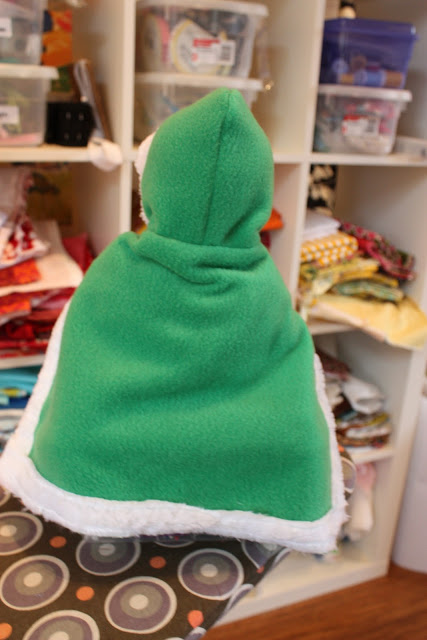On my street we have lots of different fences, but there are two picket fences that catch my eye every time I pass them.
They just have a unique charm about them. The homes that go with them are equally as charming, and while I can't put up a fence by myself, I can sew something that looks like one, so I give you my take on a Picket Fence Pillow.
Picket Fence Pillow Front
Picket Fence Pillow Back
After I made my first Picket Fence Pillow, my mom emailed me requesting some pillow for her house. I live in California and my mom lives in Georgia. I get to see her quite often which makes the distance not so painful. Knowing that my mom has my creations in my House in the South makes me feel a little closer to home, and totally loved by my mom. She bought the chair above from Pottery Barn, and I told her to mail me the cover to the pillow. She did, and I combined the material from the cover with my quilter cottons, and made her a Picket Fence Pillow.
I'm entering this pillow in the Bloggers Pillow Party at Stitched in Color. Check it out!
We've had some requests here at Made On Maple for a Picket Fence Pillow tutorial. We try to make our readers happy, so here goes! My only warning is that I don't really make exact cuts or measurements for this pillow. It is a very whimsical process. *Note inspiration pictures above. They fences I like aren't uniform, and neither are my fabric pieces, and neither should yours be!!
The cuts of fabric you'll need are:
*Main fabric (in my tutorial they are the pink ones) free hand cut strips 8" to 10" long by 2" to 3" wide - You will cut as many pieces as you need to cover your pillow. I also use all quilter cottons, but you could use any kind of fabrics.
*Border fabric (in my tutorial they are the light linen color) free hand cut strips 7" long by 2" to 3" wide. You will need DOUBLE the amount of these strips then the main fabric strips. If you cut 10 main fabric strips, then cut 20 border fabric strips. Make sense?
*Piece of quilt batting cut to the size of your finished Picket Fence Pillow top
Let start sewing.
First sew border fabrics to main fabrics. You'll layer them right side to right side at the short ends. Sew together using a 1/2" seam allowance. You'll make a strip that looks like this.
Continue sewing border fabrics to both short sides of each main fabric. Once you are done press all seams open.
Now lay out your fabric *slats* (that a fence term for you). This is the design step. Arrange your slats however you want. I just try to make mine look as asymmetrical as possible. Think whimsical.
Once you've positioned all your fabric slats, sew the slats long sides together. Now I use anywhere from a 1/4" seam to a 1/2" seam. Sorry to not be more specific.
I take each slat right side together on the long side and sew it. I don't even use pins. You can if you want, but don't feel any pressure from me!
Once all the slats are sewn together, I press all the seams open. You could do this after you sew each slat together, but I feel like I'm more efficient if I do it at the end.
Your Picket Fence Pillow top piece should now look something like this:
Don't bother cutting all those strings. You'll do that in the next step! And yes, I sew in my laundry room and I use my washer and dryer as my sewing table. I love my little home!!
Next you'll want to cut down your Picket Fence Pillow top to the size of your pillow form. At the end of this tutorial, I'm going to link to my favorite closure for pillows. The author of the tutorial will tell you to cut your pillow top a 1/2" bigger then the height and width of your pillow form. For example, the pillow forms I've used to make my Picket Fence Pillow are 16 X 26, so I cut my Picket Fence Pillow top to 16 1/2" X 26 1/2".
Now comes the quilting part. Here's a little hot tip for you all. Annee shared it with me, and I'll share it with you. Invest in some quilting adhesive.
It works miracles. Just spray a little on your batting, smooth your Picket Fence Pillow top over the batting, and voilà! It sticks! This makes quilting so much easier. You don't have to use pins or worry about your fabric moving all around on your batting.
Next I quilt my top by simply outlining the slats. It is fast and easy and I think it looks lovely.
You are done! Well, you're done with the top, but the back is really simple. Just follow the link below.



























































